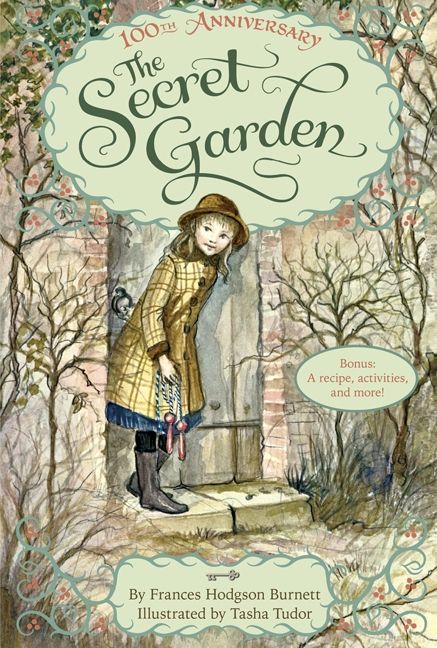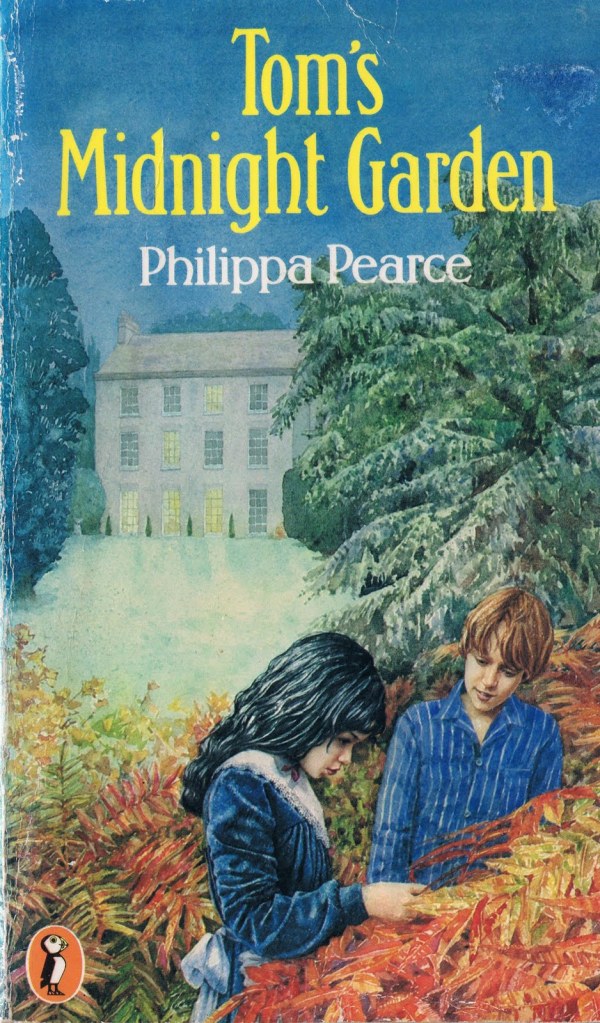Forty years later, I still have the book: a hardback with a light green cover showing a girl standing at a garden door, poised to enter. I received The Secret Garden for Christmas the year I was ten, and although the memories of most childhood presents have long since faded, I remember that gift with vivid clarity. I spent the afternoon of Christmas Day lying on my stomach on the rust shag carpeting of the living room, avidly turning pages, absorbed in the story of a young girl who found an abandoned garden where she could become her most authentic self.
It was the gateway drug to a lifetime of loving books about gardens.
Writers of all genres are inspired by the earth and what we plant in it. On my bookshelf, Kate Morton’s novel The Forgotten Garden shares space with the mid-century gardening memoirs of the acerbic Beverley Nichols. Over the years I’ve acquired volumes of poetry about gardens, and I’m currently absorbed in Marta McDowell’s Emily Dickinson’s Gardening Life, which explores the connections between the poet’s writings and what was blooming on the grounds of her home in Amherst. This begs the question of why gardens are such a captivating subject. What makes them such fertile soil for the imagination of a writer? Why are they so inviting to readers?
An answer can be found in the book where, for me at least, it all started. Several years ago, I re-read The Secret Garden, this time with my children. Seeing it with the eyes of an adult, I found the story has a message both timeless and resonant. The novel tells us that the garden is a place where everyone gets another chance and where life and beauty always win.
I don’t live in a grand estate on the Yorkshire moors, but even the smallest garden teaches the same message. In the modest yard of my suburban home I weed, water, turn the soil, apply fertilizer, and employ various stratagems to keep my dog from digging up the flowerbeds. In the nearly twenty years that I’ve lived here, I have had failures (I still mourn the beautiful bleeding heart that withered and died) and successes (the rosebushes, which I unwittingly planted in the best place in the yard, thank me with explosions of color). Sometimes the work gets away from me; in spring the weeds often proliferate unchecked, and I’ve been known to forget to water my annuals, with disastrous consequences. And I’ve learned the truth that every beginner gardener has to face: In spite of our best efforts, certain plants simply don’t thrive in the places we choose to put them. All you can do is uproot them and try again.
But though individual plants may fail, a garden by its very nature is a place of life and growth. I’ve known many gardeners, but none of them have been cynics or nihilists. The very act of planting tends to spring from, and support, an outlook tilted toward optimism; after all, no one bothers with a garden if they think the world is about to end. Even in challenging times, when my own positive worldview has been tested, the garden has kept me grounded. This was certainly true in the first few months of the pandemic, when normal life came to a halt and venturing out of the house felt scary in a way it never had before. Spooked by the increasingly grim headlines, I would go to my backyard each morning, coffee cup in hand, to see if anything was blooming. Something always was. It was a daily ritual that centered me, proof of a garden’s power to root us when we feel unmoored and afraid.
Although The Secret Garden first introduced me to the power of gardens, another childhood book also holds a place in my affection. When I was twelve, I feel in love with the 1958 novel Tom’s Midnight Garden by Philippa Pearce. It’s the story of a young boy who finds a garden in the backyard of the house where he is staying with his aunt and uncle, a Victorian maze of flowerbeds and paths and lawn that only appears at night. For Tom, the garden is an escape from loneliness and inactivity, a place where he can climb trees, scale walls, make mistakes, and make a friend. It’s a gateway to freedom, satisfying the childhood need to test the boundaries of what is possible.
Adults crave freedom, too, and many of us also find it in the garden. Over the years, I’ve learned that the grunt work of my backyard — the weeding, watering, deadheading — is actually liberating for me as a writer. Being so close to the earth flips a switch on my subconscious, causing creative possibilities to rise to the surface. I can remember exactly where in the yard I was working when I had an epiphany about a certain plot point, or when I had the idea that later turned into a two-part article. I’m not sure why gardening leads to a freer flow of ideas than folding laundry does, but I’m deeply grateful for the inspiration.
In fact, when I re-read The Secret Garden as an adult, I was struck by how often the three children speak about the Magic (always capitalized) that they experience in nature. Colin, the invalid whose physical strength is restored by his hours spent in the garden, says, “Magic is always pushing and drawing and making things out of nothing. Everything is made out of Magic, leaves and trees, flowers and birds, badgers and foxes and squirrels and people.” Later, Mrs. Sowerby, the wise mother-figure of the novel, tells the children that the life force they call Magic actually goes by many different names (her name for it, which I love, is “The Big Good Thing”).
You can support this blog by ordering books through my shop on Bookshop.org. https://bookshop.org/shop/openbook
It’s hard not to feel that you’re witnessing magic when a tiny brown seed gradually becomes a sweet pea plant with red and purple blossoms. There’s something miraculous about planting a bulb in fall and forgetting about it for months until the day when a tiny green point pierces the soil, reminding you that the bulb has been doing its own quiet work below the surface. I plant, fertilize, and water, but there’s a force beyond my own efforts that is making my garden grow. It’s similar to the feeling I get when I’m writing and new characters suddenly materialize on the page, coming from someplace beyond conscious thought, making themselves immediately at home in my narrative. Whatever name we give it, there’s a creative energy in the world that expresses itself in the unfurling of a vine as surely as it inspires a novelist with the perfect description. And whether we’re in the backyard or at our writing desk, that energy is exhilarating.
As the world grows more complex, our need for gardens – both real and imagined — is evergreen. I don’t think it’s a coincidence that fictional characters who spend time in gardens often find renewal by the final chapter, ending in a better place than they began. Those characters are demonstrating what we humans know intuitively: that there’s no purer symbol of what is positive than a garden. It’s a place where — thanks to magic, or the Big Good Thing — we are both grounded and set free.
Ginny Kubitz Moyer is the author of the novel The Seeing Garden (She Writes Press, May 2023), as well as several books on spirituality. She lives in the San Francisco Bay Area. Her website is www.ginnymoyer.org.



